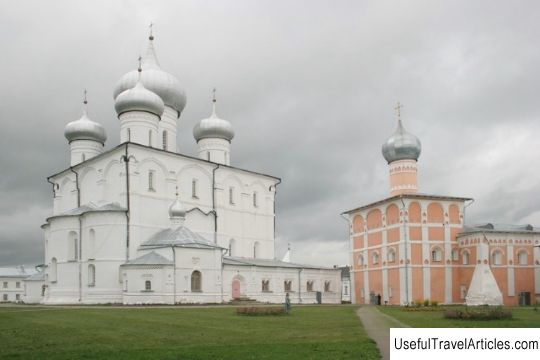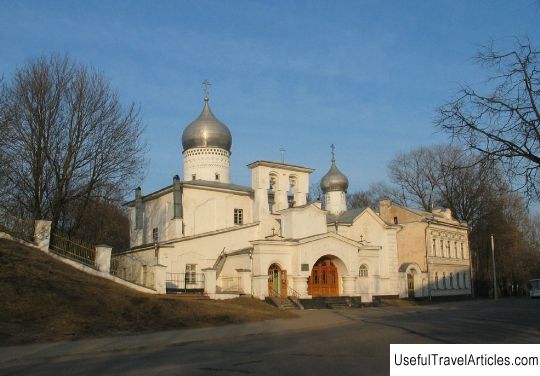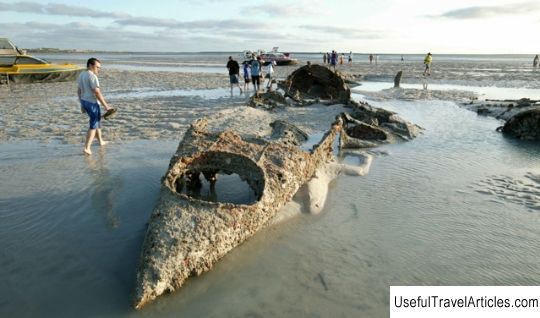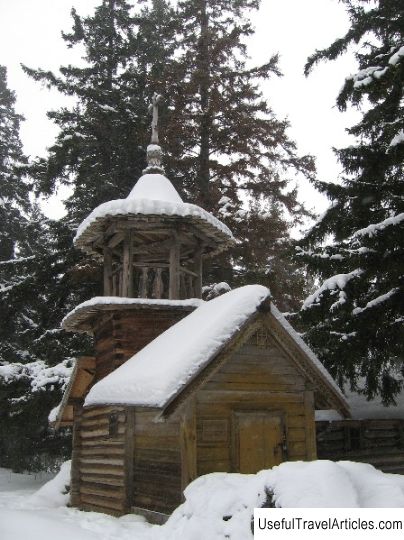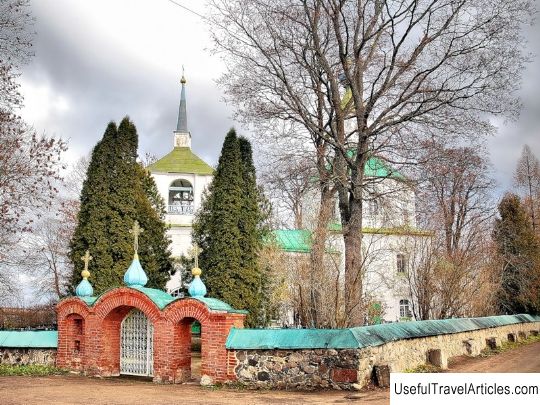Church of Varlaam Khutynsky description and photo - Russia - North-West: Vologda
Rating: 8,2/10 (7995 votes) 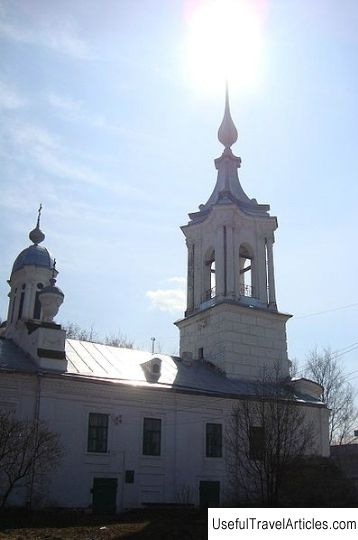
Church of Varlaam Khutynsky description and photos - Russia - North-West: Vologda. Detailed information about the attraction. Description, photos and a map showing the nearest significant objects. Photo and descriptionOn the site of the church of Varlaam Khutynsky until 1780, there was a small stone church, dismantled and rebuilt right up to the foundation. It is known that the church, named in honor of the Abbot of the Transfiguration of the Savior Khutynsky Monastery Varlaam Khutynsky, was built with the funds of the local merchant Uzdelnikov. Varlaam Khutynsky was born into a noble and wealthy Novgorod family. While still a young man, he tonsured his tonsure at the Lisich Monastery and soon became a hermit living on the Khutyn hill near the Volkhov River. In 1192, he built the Church of the Transfiguration of the Savior made of stone on the right bank of the Volkhov River, becoming the founder of the monastery and abbot. We have received a supplementary letter that belonged to Varlaam Khutynsky and was written on a parchment sheet, which is an ancient Russian act that has survived to modern times in the original. According to this charter, Varlaam handed over to the monastery, which he himself founded, hayfields, arable land and other lands, as well as the territory on which the monastery was located. Varlaam Khutynsky is ranked among the saints by the Orthodox Church. The Varlaam-Khutynskaya Church, which exists today, reflects the true influence of St. Petersburg's early classicism, which is considered a new architectural trend that began its spread to the city of Vologda at the very end of the 18th century. It can be assumed with great confidence that this church may not have been built, but designed by a rather extraordinary master. This fact is evidenced by the perfectly worked out details of the temple decoration and a rather slender and easily rising up small bell tower. In its architectural position, we can say that the church stands quite lonely among the position of the other fifty churches in Vologda; the only exception will be the Church of St. Nicholas the Wonderworker, located on Sennaya Square. But it is worth noting that the presence in the city of Vologda of civil-type buildings of the same style may suggest that the chief architect could be a local resident. The famous church of Varlamma Khutynsky is very small, but two-story. The west-facing facade with the main entrance is beautifully decorated with a semi-rotunda, which is firmly supported by four Ionic and incredibly slender columns. Above it, in a rusticated deaf cube, rises a fairly high and transparent four-piece ringing of a small bell tower, the edges of which are slightly concave; the cut corners are decorated with pilasters and paired Corinthian columns. In addition, it is the pilasters that support the light and modest frieze. The wedding of the bell tower is carried out in the form of a complex pyramidal dome with the thinnest and pear-shaped spire. Of great interest is the dome located above the eastern part of the temple building in the form of an oval and rather unusual graceful lantern with a small dome. Two chapters of the main volume are presented in the form of decorative vases, located on pedestals, decorated with stucco garlands, which make the vases even more elegant. This unique use of decorated vases perfectly matches the secular character of the decorated architecture of the temple. The appearance of the church of Varlaam Khutynsky is slightly spoiled by a particularly wide buttress, built in the middle of the 19th century on the left side of the rotunda. The part of the church building on the left has slightly moved away from the bell tower, which gives the impression that it is literally built into the church, because independent strong walls run to the ground. In this regard, a crack formed, due to which it was necessary to strengthen the side of the wall. In addition to this building and some other minor alterations, most likely, the exterior of the church has survived to this day in the same form as it existed in 1780, but this cannot be said about the interior of the church.       We also recommend reading Museum of the Ninth Fort (Kauno 9-ojo forto muziejus) description and photos - Lithuania: Kaunas Topic: Church of Varlaam Khutynsky description and photo - Russia - North-West: Vologda. |
